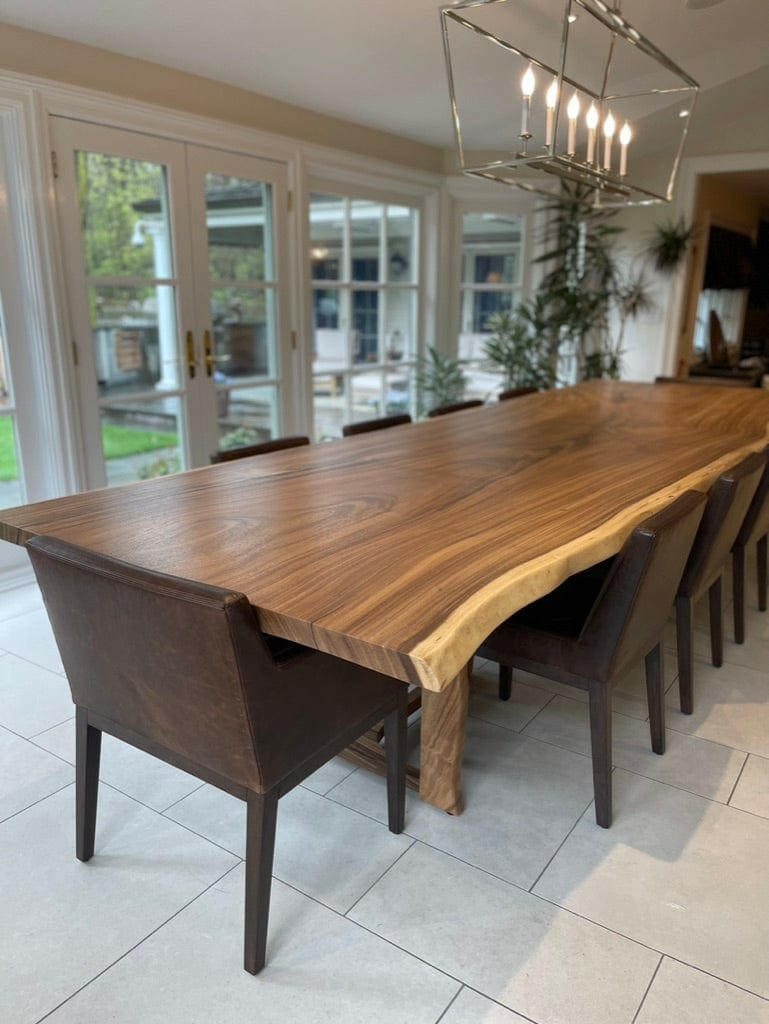Dining Room Table Legs That Incorporate Capability and Modern Style
Dining Room Table Legs That Incorporate Capability and Modern Style
Blog Article
A Comprehensive Take A Look At Table Leg Styles: Finding the Perfect Match
Picking the ideal dining table leg design is critical for both visual appeal and sensible performance. Conventional four legs use classic style and stability, while the pedestal base supplies enhanced legroom and a modern appearance. For those with larger tables, trestle legs make certain sturdy assistance, whereas hairpin legs present a mid-century modern-day ambiance with their minimal layout. The x-shaped legs mix contemporary design with enhanced security. Each of these alternatives brings one-of-a-kind benefits, making the option greater than just an issue of preference. Check out better to find which design completely complements your eating room and way of life.
Conventional 4 Legs
Among the various kinds of dining table leg designs, the conventional four-leg layout continues to be an ageless selection for numerous homes. Four legs give well balanced support, ensuring the table remains steady and qualified of birthing significant weight (dining room table legs).
From an aesthetic perspective, the traditional four-leg layout can be conveniently adapted to numerous indoor styles. Whether crafted from timber, metal, or a mix of materials, these legs can be intricately sculpted, sleek and minimalistic, or anything in between. Their adaptability allows them to match both rustic and contemporary settings perfectly.
Moreover, the straightforward framework of the four-leg style assists in convenience of motion and placement within a space. Unlike even more complex bases, this design minimizes obstructions, offering adequate legroom for restaurants. In recap, the conventional four-leg dining table leg design weds sustaining style with sensible capability, making it a sharp selection for those looking for both kind and function in their dining furnishings.
Stand Base
Often celebrated for its sophisticated and space-efficient design, the pedestal base is a recognized option to the standard four-leg arrangement in eating table leg styles. This unique base normally features a solitary central column supporting the table top, which can vary in type, from ornately sculpted wood to sleek, modern steel. Among the main benefits of the pedestal base is its capacity to optimize legroom and seating versatility. Without corner legs, diners are managed greater liberty of movement, making it an excellent choice for round and oblong tables that advertise more intimate and comprehensive gatherings.
Additionally, the pedestal base's central assistance can handle significant weight, permitting for the use of larger table tops, such as marble or thick wood. This strength paired with its aesthetic versatility makes the stand base a preferred choice in both conventional and modern interior settings. It can flawlessly incorporate with various layout motifs, from classic beauty to minimalist modernity. The central column itself offers a canvas for detailed designs and creative expressions, including an element of visual passion under the table. In recap, the pedestal base incorporates functionality snappy, making it a fine-tuned and practical option for varied dining settings.
Trestle Legs
Trestle legs provide a robust and timeless structure for eating tables, characterized by their straight cross-bracing and sturdy assistance beams. Stemming from middle ages times, this style has developed yet retained its necessary framework, making it a perennial favorite in both conventional and modern setups. The central trestle beam, typically supported by 2 or more vertical articles, uses phenomenal stability, permitting bigger table lengths without the use this link demand for extra legs.
A considerable benefit of trestle leg tables is the adequate legroom they offer. Unlike tables with four edge legs, the lack of obstructions at the table's edges offers unblocked area for chairs and diners, improving convenience and accessibility. This makes trestle tables excellent for suiting bigger gatherings, whether in an eating area or a banquet hall.
The aesthetic flexibility of trestle legs is significant. Readily available in a range of products such as wood, steel, and composite, they can be finished to enhance a vast variety of interior styles. From rustic farmhouse to smooth modern designs, trestle legs can be customized to suit private preferences. Their enduring appeal and useful advantages make trestle look at this site legs an engaging choice for those seeking both style and practicality in their eating table.
Hairpin Legs

The allure of hairpin legs lies in their simpleness and convenience - dining room table legs. Readily available in a series of products, consisting of steel and brass, they can be completed in many colors to enhance different indoor designs. Whether coupled with a rustic wooden tabletop or a modern glass surface area, hairpin legs easily mix functionality with a touch of vintage appeal
Resilience is one more remarkable attribute of hairpin legs. Despite their delicate appearance, these legs are crafted to birth significant weight, ensuring the table remains steady and safe. In addition, they are reasonably very easy to mount, making them a popular selection for do it yourself fanatics and professional furnishings manufacturers alike.
X-Shaped Legs

Built from products such as steel, wood, or a combination of both, X-shaped legs can be customized to match various style choices. Steel legs typically offer a sleek and commercial feeling, ideal for loft-style apartment or condos and modern-day dining areas. On the various other hand, wood X-shaped legs provide a warmer, a lot more rustic allure, suitable for farmhouse or eclectic insides. The convenience in materials enables home owners to customize their dining tables to better fit their total layout scheme.
In addition, the design behind X-shaped legs guarantees also weight circulation, minimizing the risk of wobbling and enhancing sturdiness. This makes them especially appropriate for bigger eating tables that need extra assistance. Fundamentally, X-shaped legs mix functional design with contemporary appearances, making them a classic selection for varied eating atmospheres.
Final Thought
A detailed understanding of dining table leg designs discloses the unique characteristics and advantages web link of each style. Trestle legs ensure durable support for bigger tables, and barrette legs introduce a mid-century modern visual.
Report this page